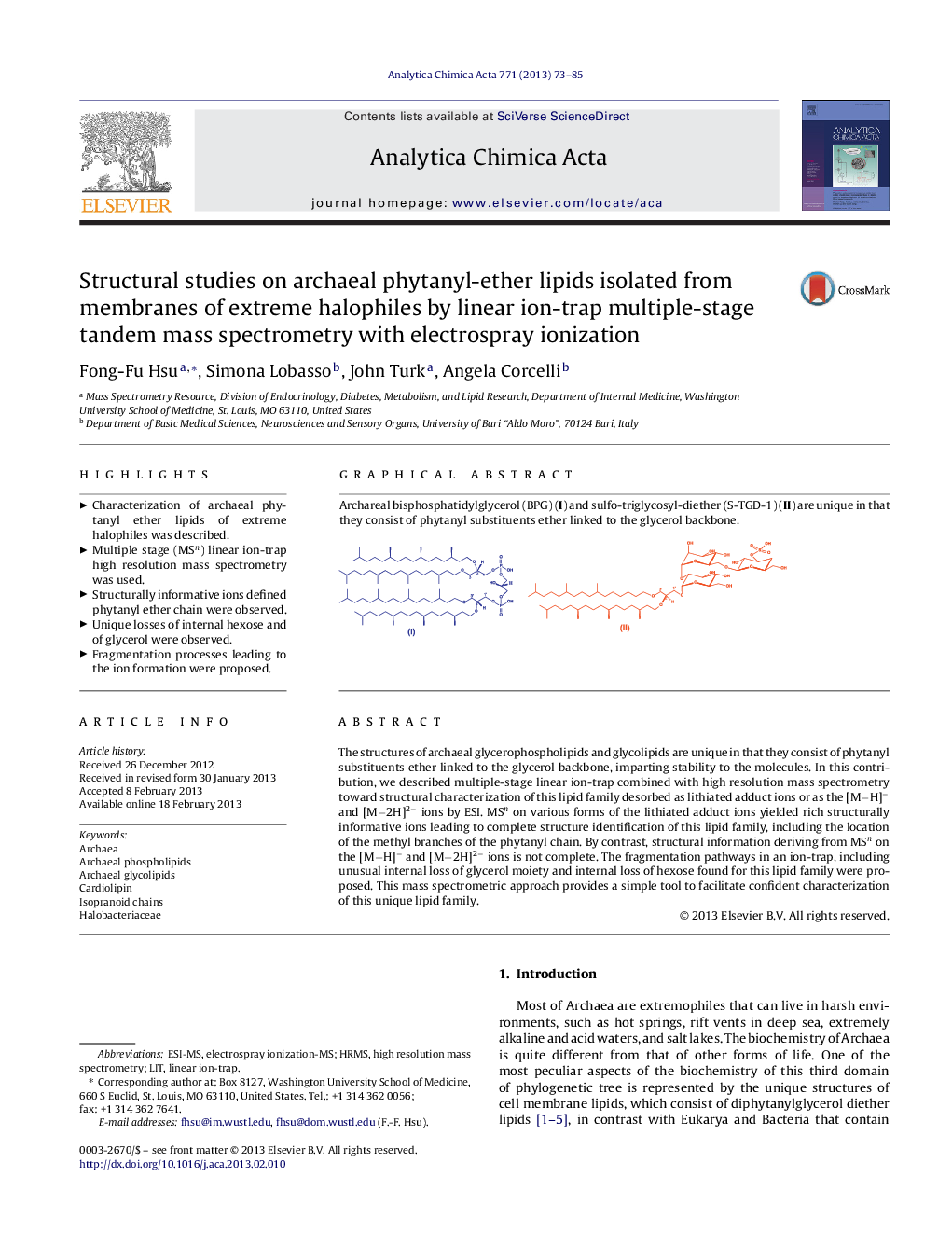| Article ID | Journal | Published Year | Pages | File Type |
|---|---|---|---|---|
| 1165016 | Analytica Chimica Acta | 2013 | 13 Pages |
The structures of archaeal glycerophospholipids and glycolipids are unique in that they consist of phytanyl substituents ether linked to the glycerol backbone, imparting stability to the molecules. In this contribution, we described multiple-stage linear ion-trap combined with high resolution mass spectrometry toward structural characterization of this lipid family desorbed as lithiated adduct ions or as the [M−H]− and [M−2H]2− ions by ESI. MSn on various forms of the lithiated adduct ions yielded rich structurally informative ions leading to complete structure identification of this lipid family, including the location of the methyl branches of the phytanyl chain. By contrast, structural information deriving from MSn on the [M−H]− and [M−2H]2− ions is not complete. The fragmentation pathways in an ion-trap, including unusual internal loss of glycerol moiety and internal loss of hexose found for this lipid family were proposed. This mass spectrometric approach provides a simple tool to facilitate confident characterization of this unique lipid family.
Graphical abstractArchareal bisphosphatidylglycerol (BPG) (I) and sulfo-triglycosyl-diether (S-TGD-1) (II) are unique in that they consist of phytanyl substituents ether linked to the glycerol backbone.Figure optionsDownload full-size imageDownload as PowerPoint slideHighlights► Characterization of archaeal phytanyl ether lipids of extreme halophiles was described. ► Multiple stage (MSn) linear ion-trap high resolution mass spectrometry was used. ► Structurally informative ions defined phytanyl ether chain were observed. ► Unique losses of internal hexose and of glycerol were observed. ► Fragmentation processes leading to the ion formation were proposed.
